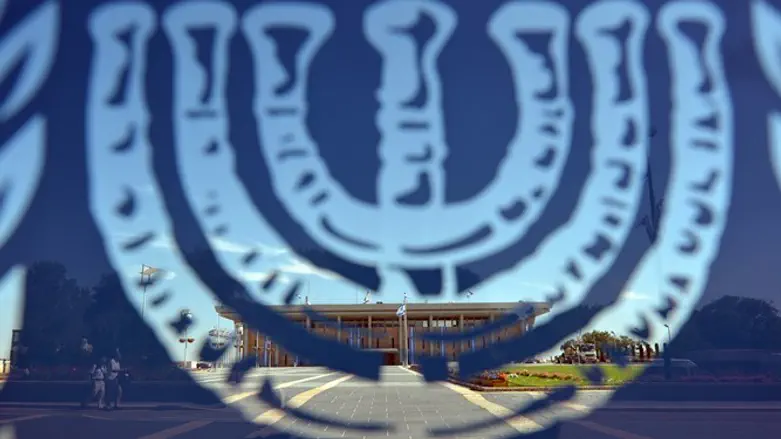
Here’s a brief explanation of the Israeli electoral system:
Israel uses the proportional representation system. This means that Israeli voters vote not for an individual representative to Parliament, but for a political party. A party which receives, say, 15% of the popular vote country-wide receives 15% of seats in the Knesset; a party which receives 40% of the popular vote country-wide receives 40% of seats in the Knesset (see below for the number of votes needed per Knesset seat.).
This means that votes are not regional as they are in the US, but sectoral: the entire country constitutes one single electoral unit.
One consequence of this is the plethora of parties which contest every election, and the multitude of parties, each representing a sector or a point of view, which invariably end up in the Knesset.
For the first 40 years of the state, the electoral threshold was 1% of the overall vote. In 1988 the threshold was raised to 1.5%, then to 2% in 2003, and finally to 3.25% in 2014, which is today’s threshold.
Since no party in Israeli history has ever received more than 50% of the popular vote, and since the ruling coalition has to number more than half of the Knesset’s 120 seats (i.e. 61 seats or more), every government in Israeli history has been a coalition.
This time will be no exception.
After the votes have been counted and the number of seats each party receives calculated, the President (currently Reuven “Ruby” Rivlin) invites the leader of the biggest bloc to form a coalition. After the last elections, half-a-year ago. President Rivlin invited the incumbent Prime Minister, Binyamin “Bibi” Netanyahu, to form a coalition.
For the first time in Israeli history, a political leader failed to build a coalition within the allotted time, and the result has been a second election.
Some brief facts and statistics on Israeli electoral history:
The Knesset (Hebrew: “Gathering”) has 120 seats, modelled after the Knesset ha-Gedolah (“the Great Gathering”), the constituent body which governed Israel from the end of the Biblical period, approximately 515 B.C.E., until the Greek invasion in 333 B.C.E., which was composed of Prophets (in its early years), Talmudic sages, scholars, scribes, and other leaders.
Israeli law grants a government a mandate for 4 years; a government can call an early election any time within that 4-year period.
First elections ever: 25th January 1949, 8 months after independence from the British Empire, while the War of Independence was still raging.
The First Knesset included 117 Jews and 3 Arabs, 108 men and 12 women.
The current (21st) Knesset includes 12 Arabs and 29 women. This includes Gadir Kamal-Mrich (Blue-and-White Party), the only Druze woman ever to be elected to the Knesset.
The first Government of Israel was sworn in on 8th March 1949, six weeks after the elections. The first ruling coalition consisted of 5 parties: Mapai (46 seats), the United Religious Front (16 seats), the Progressive Party (5 seats), the Sefaradim and Eastern Communities (4 seats), and the [Arab] Democratic List of Nazareth (2 seats).
Highest voter turnout ever: 1949 elections (86.9%)
Lowest voter turnout ever: 2006 elections (63.5%)
Number of eligible voters in 1949: 506,567
Number of eligible voters today: 6,339,279
Number of votes needed for each seat in 1949: 3,592
Number of votes needed for each seat today: approximately 36,000 (depending on how many people vote, how many of those votes are valid, how many go to parties which fail to cross the threshold, etc.).
Biggest party ever in the Knesset: Ma’arach (Labour Alignment), 1969-1974, with 56 seats (46.2% of the popular vote).
Longest gap between elections: 11th Knesset, 23rd July 1984-1st November 1988;
Shorter by just 1 day was the 3rd Knesset, 26th July 1955-3rd November 1959.
Shortest gap between elections: 4th Knesset, 3rd November 1959-15th August 1961.
Number of parties contesting the elections in 1949: 22, of which 12 won seats in the Knesset.

Number of elections held in Israel in 2019 alone: 2, which is one more than have ever been held in the entire Arab world in all its history. Number of parties contesting the elections today: 30.
Number of parties contesting the elections today: 30.
Highest number of parties ever contesting an election: 40 in the April 2019 elections, 5 months ago, of which 11 won seats in the Knesset.
Number of elections held in Israel in 2019 alone: 2, which is one more than have ever been held in the entire Arab world in all its history.
Actually, Egypt held the Arab world’s sole truly democratic election in two rounds of voting, May and June 2012. It was the sole election in any Arab country in which voters had a genuine choice of parties, and in which the outcome wasn’t decided in advance. The result was that Mohammed Morsi of the Moslem Brotherhood won the election; the army didn’t like this result, so they seized power in an armed insurrection a year later, and Army Commander General Abd el-Fattah al-Sisi became president, a post he holds until today.
So never mind the cmplicated election procedures, plethora of parties participating in them, and the mudslinging that precedes them. The definition of democracy is a state's government chosen by the votes of its citizens. Israel remains the only democracy in the Middle East, and it is a strong and vibrant one.

